
Yes
folks, I was there: back in those days when zander in their millions,
blackened the surface of the Great Ouse Relief Channel, dragging hapless
seagulls to their doom and shredding them into a gloop of blood and feathers.
When a matchman hooked a bream, he was lucky if there was anything left
other than a head and backbone by the time it reached the net. This is
the true and unexpurgated story of the unstoppable rise of the zander
- the facts that THEY would rather have kept under lock and key.
This
period piece is set in the dark days of the late Sixties and the early
Seventies. My tangled hair and comedy sideburns must have seemed fashion
statements at the time, but now exist only on yellowing, dog-eared photographs
which pop up to embarrass me when I'm least expecting it. As whimsical
psychedelia bowed out to stern prog-rock, I had somehow managed to bluff
my way into the sixth form and the weekend trips into the Fens after predators
were a cathartic necessity. This was mainly to clear my head of such ponderous
irrelevancies as the Schleswig-Holstein question, but justified to my
parents as a means of purging myself with fresh air and healthy exercise.
The fact that these trips often left me cold-ridden and exhausted was
brushed aside as mere coincidence.
Trouble was brewing in the windswept flatlands. A well-intentioned River
Board employee had decided to introduce an exotic import to the supposedly
enclosed Great Ouse Relief Channel. Just ninety-seven zander,
or pike-perch as they were called then, were secretly introduced to the
twelve mile, fish-filled water. Just a few years later, I read an intriguing
article in the long defunct Fishing magazine entitled, "And then
they came - pike-perch from a Fenland drain". The writer and his
friends had been troubled by countless missed runs on livebaits, until
as an experiment, they scaled right down. Suddenly they were catching
one pound zander one after the other and the secret was out.
Within ten years, they had spread to such an extent that they were biting
chunks from the living flesh of large bream, stripping them down to the
bone and eating them alive like starving pirhana. By night they would
leave the water, fanning out across the fields, raping the local wildlife
and setting fire to workmen's cottages. Panic spread throughout the kingdom
from Mildenhall to Kings Lynn. A hired killer was brought in. His name
was Bear - George Bear. Many a captured zander was nailed to the village
cross or burned alive in a wicker cage. Norfolk was awash with blood and
scales. In spite of all these efforts, by 1985, not a single non-predatory
fish was to be found alive in the whole of Fenland. The zander populations
were magically sustained however, as they evolved to subsist on rats and
sugar beet, with the occasional treat of a passing cyclist.
The idea of fishing for these hard-as-nails invaders was incredibly exciting
to me in my late teens. Not for me the lady-like roach or the foppish
bream. Even the pike seemed to have a rather lazy air about them, only
savouring ultra violence in short, rapid bursts. With their rough scales
and spiky dorsals these were true punks, almost ten years ahead of their
time. They didn't just grab a fish and swallow it; they would first beat
it to death with bike chains, then tear it apart, fin by fin.
A day at the Relief Channel wasn't a simple one day jaunt into the East
Anglian countryside, it required sufficient live and deadbaits to supply
a combined battery of at least twenty five rods, which were spread out
between the gaps in the reed beds over a distance of about two hundred
yards. Any old rod was pressed into service to achieve the necessary coverage,
from sawn off match rods, to six foot solid fibreglass boat rods with
rings held on by insulating tape.
The
whole day was spent speed jogging backwards and forwards along the serried
ranks of rods, hoping that the odds were in favour of arriving at a rod
as the run was just starting to develop. On days when the pike and zander
were particularly un-co-operative, we must have covered twenty to thirty
miles each, over soggy ground and without stopping. Very impressive when
you consider that this was all carried out in knitted balaclavas, snorkel
parkas and wellies.
The
Saturday morning livebait catching sessions were often marathon efforts,
requiring an amount of dedication that would be unthinkable for any sensible
person once past the madness of their late teens. Friday nights were reserved
for searching out whichever watering holes served the now legendary Ruddles
County. Now let me make a distinction here: Ruddles County in those days
was a fierce and potent brew made from discarded engine oil and strained
through doormats. It bore not even a passing resemblance to the bland,
commercial fizz that has been passed off under its name in more recent
times.
To a seventeen year old, a pint of County was something to be feared.
It was intended to be served completely flat and most definitely contained
girders. Anyone being served a pint of County with a head on it would
probably complain to the landlord that it was off. Its fearsome effect
on the palate can sometimes be conjured up amidst swirling clouds of nostalgia,
and with vast amounts of concentration, but one thing was for sure, it
was certainly not a girl's drink, and reserved for the most serious of
imbibers.
Graham
was a member of the Peterborough Specimen Group, seemingly a social club
for psychopaths, rapists and murderers, so sometimes on a Friday night,
I was given the dubious treat of a night out in their company. Although
I felt quite comfortable in the comparitively friendly Bourne boozers,
the Peterborough drinking holes were in a different league altogether.
The PSG of course, favoured the most run-down, seedy, dangerous and violent
of these. With much trepidation I edged my way past the inevitable fight
taking place in the car park of a daunting looking brick erection in the
aptly named Dogsthorpe.
I
crunched over the broken glass, and edged into the blazing interior, lit
by fluorescent strip lights, dulled only by the swirling banks of choking
smoke from the ubiquitous Player's No.6. I would stand there nervously
clutching my pint, surrounded by Graham, Big Lol, Mutley, Pete Harvey,
Chalky White, Mick Hennesey and Dennis Smith.
Mick
and Dennis seemed comparitively civilised, having obviously attended one
of the posher schools, and had quite possibly had their hair cut at some
point during the last ten years. They must have been really hard though
because they looked as if they washed and even shaved, and that was a
sure way to earn youself a beating in one of these establishments.
This
was back in the days when the breathalyser was virtually unheard of, so
on leaving the pub, I would have to wait for Graham to be sick in the
car park before driving us home. This was a talent I had yet to acquire,
and I would often be dragged out the next morning, deathly white, shivering,
and likely to scatter my stomach contents all over the countryside.
The amount of baits required caused us quite a few problems. Whole Saturdays
would be spent roaming vast distances across the Lincolnshire countryside
in an effort to collect them. If the favourite river locations failed
to produce the goods, there were a few highly illegal yet prolific venues
to fall back on. These often required a lightning dash through a hole
in a hedge and a worrying run across open ground, until refuge was gained
among the lakeside undergrowth.
The baits acquired in this way were usually rudd, which though less than
ideal would often save the day. In the beginning, all the baits would
be stored in a brewing bucket and kept alive with a battery powered pump.
Later on we became more ambitious, and bought a plastic laundry basket
specially for the purpose, which we would sunk and concealed in the deep
margins of one of the local pits; strictly private pits of course.
The first stop on the bait round would often be the Electricity Cut at
Peterborough, where you were guaranteed to catch as many bleak as you
could possibly use, although these were usually quite small, even for
bleak, and considered for emergency use only. We would stand in the bitter
cold with the evil black mud working its way up our legs, and the foul,
sickly stench of the sugar beet factory assaulting our nostrils. Sometimes
if the turbines were running, the float would disappear from view within
seconds as it was carried off into the swirling mist that always hung
over the oily, warm water. On a good day, you might catch roach or skimmer
bream, but more often than not, the bleak would grab any bait before it
even had chance to break through the surface film.
There was a sort of bait hierarchy, with chub comfortably at the top.
Roach came a close second, followed by the surface swimming dace and rudd.
Below those came the species used in sheer desperation: skimmer bream,
visible but fragile; perch, active but dull and spiky; gudgeon, game but
too small, and bleak were just too delicate, but right at the very bottom
of the pile came the poor old ruffe. If only we had known about the effectiveness
of eel sections, we would never have been without effective baits, as
all the local river, drains and even ditches absolutely swarmed with them.
The most prized baits of all were chub of around four or five ounces,
but when fishing for these, it was amazing how often we would be frustrated
by the attentions of one pound roach and three pound chub, which even
we declined to use. Saturday bait snatching expeditions were planned like
a commando raid, with first, second and third choice locations spanning
vast distances across the Fens. The round trip always ended at the private
roadside pits, which being on next morning's route, enabled a convenient
pick-up point in the darkness of the early morning.
With
any luck, we would reach our required target by dusk, giving us the necessary
cover under which to hide the laundry basket full of our plundered victims.
We had used keepnets for this purpose in the past, but these would often
come under attack from eels, even in the iciest weather, leaving us with
a high percentage of headless corpses. I now look back on our actions
under the burden of a guilty conscience, although we scarcely considered
the morality of our deeds, and even considered it quite an exciting adventure
in its own right.
We
always treated pike and zander with the utmost respect, but their rotting
corpses were a regular sight on the banks of any match lengths. Matchmen
would look into our livebait buckets with disgust, while we would look
on in horror as they tipped their nets of fish into the wire basket at
the weigh-in. It was always a good idea to be present at the end of a
match, because we were guaranteed to find a good supply of dead or dying
fish to supplement the bait supplies for the following week. As they say,
"the past is a foreign country" – different time, different
rules.
In the early days, I would go to bed at nine in the evening, ready for
when my alarm went off at 3.30am. Even in my pre-pub days, these early
starts were always difficult, as the excitement would often make it difficult
to get to sleep, and I knew that the drift into oblivion would be terminated
by the terror of something that has left mental scars to this very day.
The alarm clock I used must have been heard two streets away, and I slept
primed to leap into action within milliseconds in a futile attempt to
silence it before it woke up my long suffering parents.
The first thing I had to do on creeping downstairs was to phone Graham's
number, and let it ring just once before putting the phone down. Hopefully,
I would get the single ring in return a few seconds later to confirm that
he was out of bed, and would be around to pick me up within about half
an hour.
I can still remember quite vividly, stepping outside the back door to
sniff the morning air and assess the weather prospects. Sometimes it would
be quite atrocious, but because we had invested so much effort, we would
go absolutely regardless of conditions. I would sit out by the garden
gate in the pitch darkness waiting for the headlights to appear at the
end of the road.
After
Graham had thrown my gear into the limited confines of the Ford Anglia,
or whatever was his latest pride and joy, I would wriggle into the passenger
seat by ducking under the holdalls that protruded across the top of my
left shoulder through to the dashboard. Then, with bank sticks digging
into my neck, and drinks cans rolling in the foot well we would drive
off, yo-ho-ho-ing into the rain and darkness of a winter morning.
Stopping off to collect the baits from their hiding place was always a
bit of a pain and inconvenience. Ripping our clothes on the barbed wire
fence, with icy fingers we would search around at the water's edge for
the concealed cord. Sometimes when shining a torch into the water, we
would see the eels lurking in the vicinity of the basket, frustrated by
the plastic mesh. We would then have to tip the baits into the brewer's
bucket full of cold pit water, which could sometimes be crammed into the
boot, but which on many occasions would have to be wedged between my legs
for the whole journey.
At last the expedition was now under way. Careering along the unlit back
roads, we were soon belting down the long, straight road to Thorney. It
was always my duty to try to pick up something on the car radio, which
in every car I remember Graham having, was always bouncing around loose
on the parcel shelf in a nest of wires and connectors. Just about the
only station broadcasting at that hour was Radio Caroline, and to find
this I would have to turn the tuning knob painfully slowly, and listen
for the faint and erratic signal that would suddenly emerge apologetically
from between the ebbing and flowing of ignition interference and howls
of static. One of my most vivid recollections is that of listening out
for the tell-tale strains of Eric Clapton's Let It Grow, which almost
seemed to be on a constant tape loop.
On occasions we would have to make the detour to Dogsthorpe to pick up
Pete Harvey, the one time Nene carp record holder. Now nice guy that he
was, or even still is, Pete had absolutely no concept of urgency, and
while I was chomping at the bit to get to The Channel, Pete would just
bumble around and roll another fag, which meant that he would then need
to have another cup of tea.
Apart
from these frustrations, being the junior member of the party I would
be confined to the back seat of the car, barely visible under all the
stinking baggage. I really have no idea how on earth we managed to get
the three of us plus all the gear into one car, as they didn't even have
hatch backs in those days, and I now sometimes struggle to get all my
gear into a far bigger car for a simple all-nighter.
We would chug along the deserted straight up to Guyhirn, pass over the
river Nene into Norfolk, then set the controls for the heart of Kings
Lynn. Remembering to turn right at the outskirts (oops - reverse back
up the road), get into a wheelspin at The Metal Box Company and then steady
onto the home straight; although as straights go, this was an exceedingly
winding, twisted, bendy and slippery one. In the frosty twilight we would
skid sideways through slippery Elm, clatter through Outwell, then hopefully,
over and not into the Middle Level.
Before
long the high banks of the Tidal Ouse towered over the winding road, heralding
the run-up to the outskirts of the Holy Mecca itself, Downham Market Bridge.
Even in the near darkness, the wide expanse of the Great Ouse Relief Channel
reflected sufficient light for us to assess the conditions. Ideally, we
would cross the railway line at Downham Market as the very first fingers
of daylight were streaking the horizon, hoping to arrive at Denver Sluice
just in time to see the far bank gradually emerging from the gloom.
Parking
spaces were a bit limited; Ray Webb's caravan occupied most of the space
by the first gate and Neville's Del Boy three-wheeler was usually parked
by the far bank gate near "The Stones". First light on the Channel
was an incredible experience in those days and as we began the long walk
to the hotspot, there were always fish of all sizes rolling from one bank
to the other.
Everywhere
you looked, as far as the eye could see, there were dimples, swirls and
splashes as countless millions of fish broke the water surface; all this
at a time when the doom merchants were proclaiming that the zander had
eaten everything that ran, swam or wriggled. Heavily laden with tackle,
we would carry the bait bucket between us, trying to keep in step while
the thin wire handle bit into our fingers.
We first discovered our "hotspot" by just walking until we were
on the point of collapse. There was a long reed bed, through which fishing
was virtually impossible, followed by a clear stretch of about a hundred
yards that somehow looked a bit stark and uninteresting, but beyond that
the reed beds began again with just one or two gaps; just sufficient for
a couple of people to spread out the usual motley collection of rods.
Beyond that, the reeds continued almost uninterrupted to Downham Bridge.
We were later to find out that we had accidentally stumbled upon one of
the major Relief Channel hotspots, jealously guarded and fished by many
of the well-known predator anglers of that period.
Graham had two Bruce & Walker MkIV SU's apart from the other nineteen
rods he would put out, so was always able to use the more selective half
mackerel. I was limited to lighter baits on my eleven foot mongrel Avons,
so on one rod I usually launched a small deadbait on size 10 trebles as
far as I could cast it, and a larger livebait about twenty yards out on
the second. We were always plagued by strange indications on the long
distance rods. Sometimes we would get false bites due to the drag, but
sometimes the Fairy Liquid bottle top would go up and down a few times,
pull the line out of the elastic band on the rod butt, and then stop.
On one occasion I decided to hover over the rod and strike at the next
of these twitches. I made contact, and after a slow, ponderous fight,
reeled in a stone dead zander of about four pounds, hooked in the mouth!
I never was able to work that one out. On another occasion I had one of
about the same weight, although alive this time, that must have taken
the bait the instant it hit the surface in about fifteen feet of water.
I knew something was wrong when I kept trying to pull off some slack line
for the weighted bottle top, and it repeatedly insisted on pulling back.
The
Avon rods I had bought off Pete were a little bit on the soft side, and
the only way I had any chance of making contact to a take on the so-called
long chuck rod, was to tighten up as much as possible, then run with the
rod up the sloping bank behind me. This caused much amusement of course,
which only encouraged me to exaggerate even more. On one occasion I picked
the rod as if in response to a run, then ran right up to the top of the
steep bank and then down the other side. After missing this so-called
"run", I re-appeared feigning outrage and indignation at the
unfairness of it all.
One morning in one of the hot swims shortly after dawn, I was reeling
in a jack of about two or three pounds when something grabbed it a couple
of rod lengths out, then belted off along the rushes with it for several
yards before releasing its grip. The small pike was eventually retrieved
looking little the worse for its ordeal, but I was left quite shaken by
the sudden savagery of the events, as whatever had attacked it was obviously
very much larger than anything I had caught before. Graham had already
used most of the prime baits on his twenty-seven rods, but there was a
chub of about twelve ounces, which was considered a bit too large, but
which had been brought along for the ride.
I quickly bit through the line to remove the one and a half ounce bomb,
and decided that as I didn't have a float to support such a bait, I would
try to fish it freelined. Casting it was out of the question, so I nicked
the hooks through as delicately as possible, then with the bail arm open,
gave it a gentle under arm lob into the water. Its first response was
to try to swim back to shore, but with a bit of gentle pressure on the
line, I gradually coaxed it in the right direction. It was quite eerie
watching the line slowly trickle out, but then, before it had gone more
than a few yards, there was an almighty swirl on the surface, and the
line began to flow from the reel with rather more urgency.
Having
watched the more experienced pikers in action, I closed the bale arm,
waited for the line to tighten to the rod tip, then wound the reel until
the rod bent round into a curve. I briefly felt the resistance of a great
weight upon the end of the line, then all went slack. The poor, chewed
chub swam up to the surface and floundered around in circles. Within seconds
the waters opened up again, the luckless chub disappeared into a swirling
vortex. I repeated the approved procedure and tightened to the fish, only
to see the mortally wounded chub flapping feebly just under the surface.
As
I started to reel in, it had travelled just a couple of yards before it
happened yet again. There was a brief glimpse of an impossibly long flank,
and once again the line was running out between my fingers. The tension
and frustration was almost impossible to bear as I tried once again to
set the hooks with my underpowered rod. Perhaps my nerves were getting
the better of me, because this time I struck to no resistance whatsoever,
and I reeled my hooks back in on a slack line. Unbelievably, the chub
appeared just under the surface and gave a final flap before being dragged
to its doom for the final time.
By early afternoon I was usually starting to flag, and if it was warm
for the time of year I would sit back on my Efgeeco Pakaseat and fall
into semi-consciousness, while the wasps finished off the remains of the
deadbaits which by this time were starting to hum a bit. Occasionally
the cry would go out when someone contacted a zander right out of the
blue. This was usually on one of the end rods, and on many occasions run
would occur in sequence to baits fished further and further along the
line, until at the very end, past Graham's thirty fourth rod it would
eventually be the turn of one of mine...which I missed.
We always packed in before dark, as it was a long drive home and Graham
needed an hour or two to pack his rods away into their thirteen holdalls.
In theory, with the bait bucket now empty there should have been more
room in the car on the way back, but Peter H in his quilted thermal suit
occupied far more space than the same person without it. I could never
work out why he always used to keep it on, but it could have been that
once wedged into it he needed more energy to release himself than could
be mustered up after the long walk back to the car.
We
always stopped at the roadside shop at Salter's Lode before starting the
main part of the return journey. When I say "we" I really mean
"they", as it was physically impossible for me to get out without
someone else emptying all the tackle out of the car first.
Once underway, Harv would soon start to overheat, then unzip the front
of his suit to release all the unwanted aromas that had previously been
safely sealed inside. Combined with the acrid fumes of Players No.6, this
poisonous concoction would gradually turn my back seat prison into a portable
gas chamber, until half choking and with eyes streaming, I would be reduced
to begging for the last remaining dregs from a can of shandy, passed through
to me through the gaps between the holdalls.
When
I was eventually dropped outside my house I always felt obliged to recite
the traditional mantra, possibly from Crabtree, which I repeated every
week when getting out of the car: "And so we return; cold, tired
and hungry, yet strangely satisfied after yet another life enhancing day
at the waterside".
In return, Graham always felt obliged to maintain the tradition of throwing
my keepnet high up into the branches of a tree in the front garden before
setting off home.
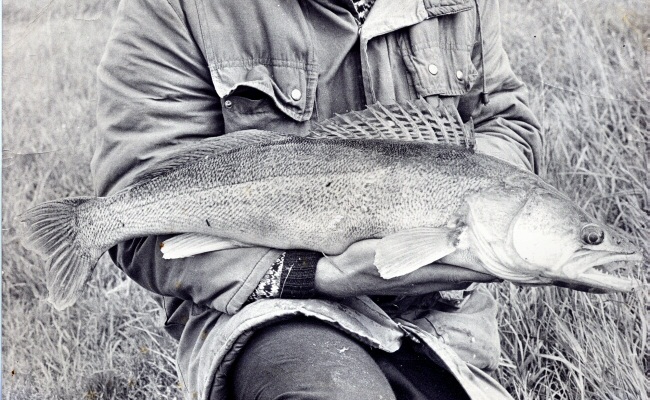
Close-up of my biggest Channel zander, which
stubbornly stuck at 9 lbs 15 ozs
HOME
| 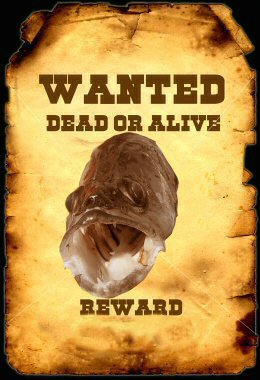
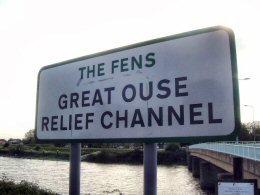
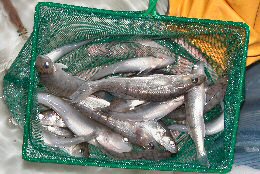
The
original stocking was of just 97 zander
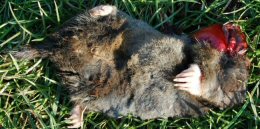
They
emerged from the water at night, laying waste to anything that moved

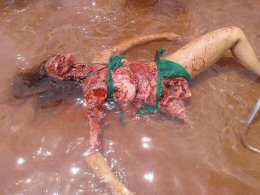
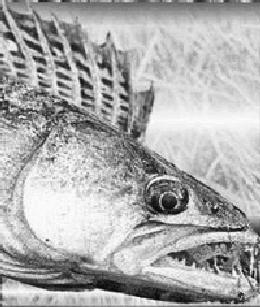
Vicious,
bicycle chain-wielding, punk thugs

Peterborough Specimen Group members

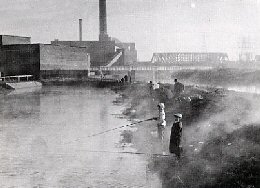
The
Electricity Cut - a festering cauldron
 
 
 
 
 
Dace,
mirror carp, chub, dace, eels, perch, roach, seahorses and sausages -
all highly sought-after as zander baits
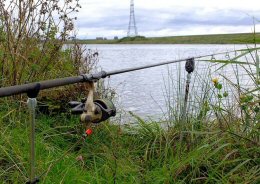

High-tech
1970s bite indicators

Graham
owned a succession of special cars that were not generally available to
the public
 

The
manually-tuned radio bounced around on
the parcel shelf, secured only
by a tangle of wires and connectors
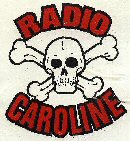 
Let
It Grow seemed to be played on a loop
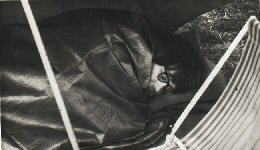
The
late Pete Harvey in favourite mode
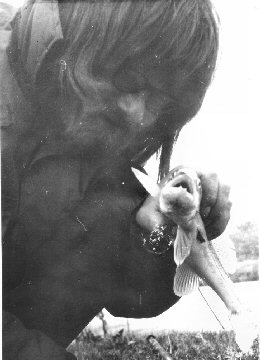
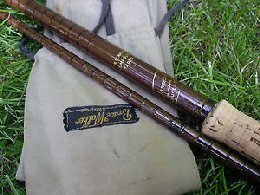
The celebrated factory finish of a brand new Bruce & Walker,
from which Graham would remove the intermediate whippings, sand off, then paint a sludge-coloured matt khaki

The
late Ray Webb - he was an unusual man
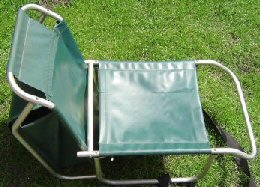
The
Efgeeco Pakaseat, aka The Ejectaseat. Kept you awake by catapulting you into the nettles at random intervals during the night

Jeremy
Wade holds a Relief Channel zander
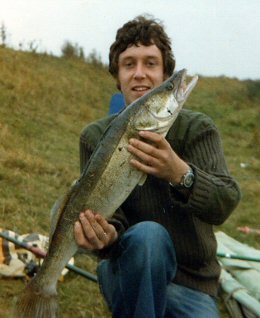 One of a large haul from Ten Mile Bank
One of a large haul from Ten Mile Bank
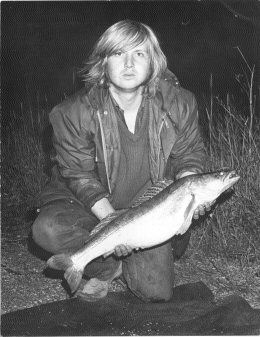
Graham
with a Relief Channel 12 pounder
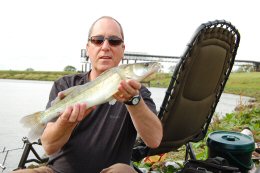
Coming
to a river near you - a Trent zander
|
 One of a large haul from Ten Mile Bank
One of a large haul from Ten Mile Bank






























